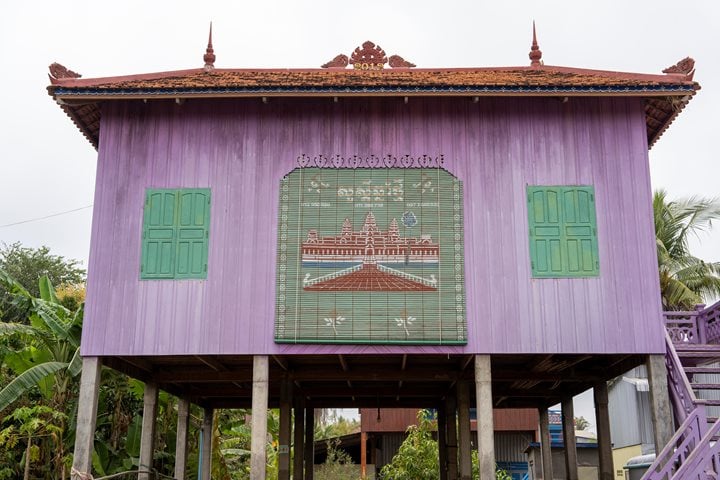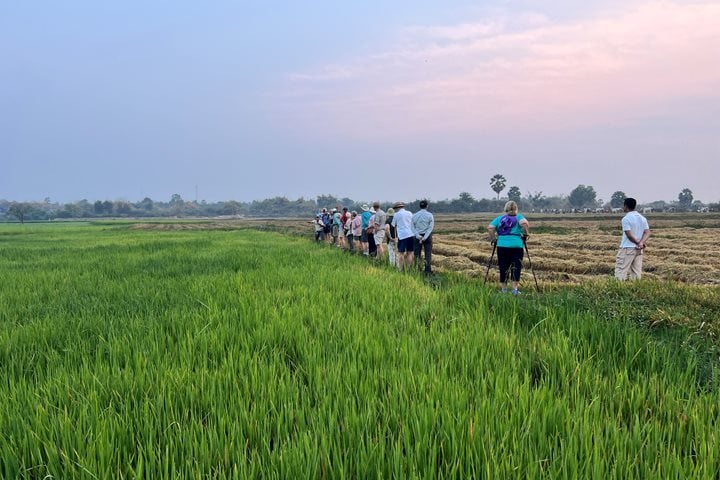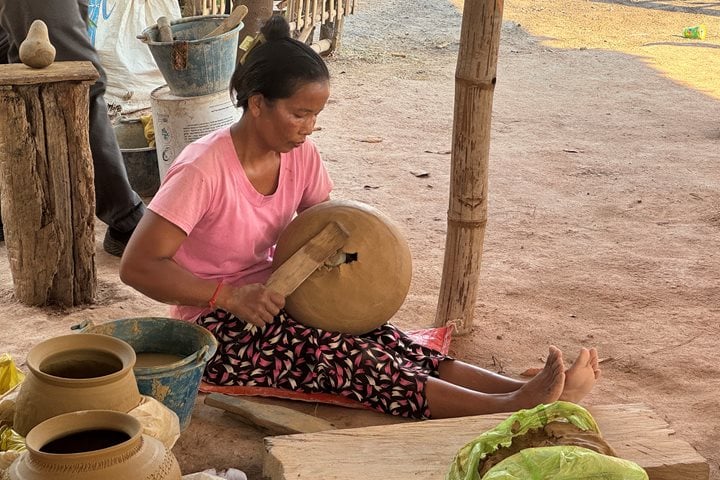What an amazing day! Bright and early at 5:10 a.m. we departed from our hotel for one of the most magnificent sites in the world, the Angkor Wat temple complex, which is said to be the largest religious structure in the world. This Hindu temple was constructed over a 37 year period by 300,000 workers. It was constructed during the reign of Suryavarman II (1113-1150) as a temple dedicated to the Hindu god Vishnu. We arrived at the temple in full darkness, but gradually the sky began to lighten with red and blue hues. Around 6:15 a.m. the bright orange sun made its dramatic appearance. It was a marvellous sight to see the grandeur of the great monument of the powerful Khmer Empire gradually become more and more visible with the growing light.
Our guides took us through the temple corridors to see long relief panels of the Hindu of Ramayana and Mahabharata as well as seeing the relief portrait of the great king Suyavarman himself seated on an elephant under 15 umbrellas We continued on to see the fate of sinners in torture scenes of Hindu Hells. Then we came to the highlight of the 1.2 km of relief panels, the scene of the ``churning of the sea of milk” shows the Hindu creation story. There were demigods and demons involved in a tug of war using a great naga or serpent (Vasuki – the king of serpents) as their rope to churn the sea and produce an elixir of immortality. The 160 foot long mural is a masterpiece and is amongst the outstanding relief carvings in the world. Throughout the temple complex are 1,800 relief carvings of beautiful and scantily- clad dancers called apsaras. Some of us would climb to the sacred third floor of the main building to get a terrific panoramic view of this true wonder of the world.
We returned to the hotel at 9 a.m. for a brunch and a nice long break until 2 p.m. when we headed out to the Artisans d’Angkor, a private company founded in 1998, dedicated to the preservation of traditional Khmer skills such as silk=weaving, stone and wood carving, lacquering and painting. It provides employment for disadvantaged rural communities.
After the handicraft center we drove out of Siem Reap into the countryside to see the jewel of early Khmer architecture, Banteay Srei Temple, dated to 967. Because of its intimate and miniature scale, elegance, fine carving details and pinkish red hued sandstone, it has been nicknamed the “palace or citadel of women.” However, it has little to do with women as it was designed and built by a Brahman counsellor to the king. It is the only temple not constructed by a monarch.
In the evening, we had dinner at the nearby Aha Restaurant in the Old Market area.







